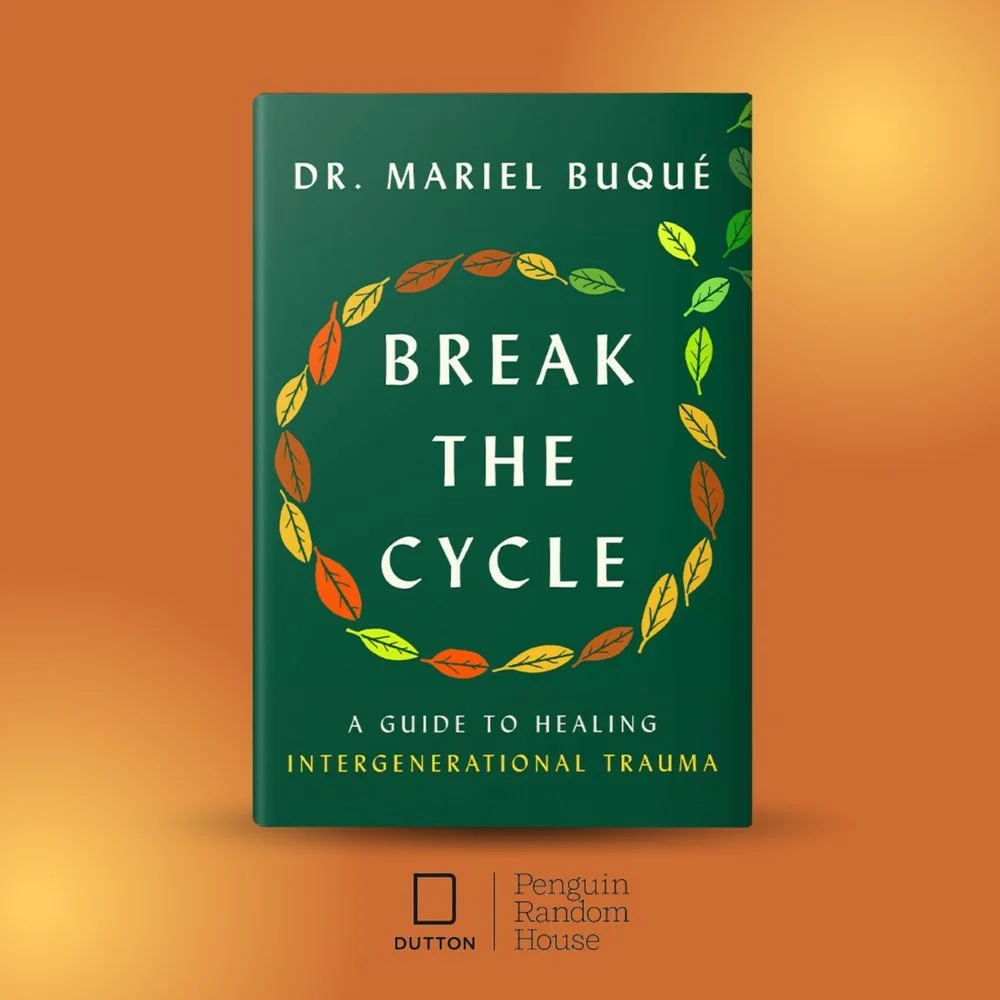There is Hope
We can work to change the conditions of our lives. We can undo the damage that life under capitalism has done to our hearts, to our minds, to our relationships with one another, and to the communities in which we live. If today feels too hard to deal with, then let’s create a better tomorrow. There is hope. A better tomorrow is within our reach.
Buddhism & Marxism
This is a fascinating podcast conversation between the hosts of Upstream and Rev Left Radio. Check it out here
Suggested Reading+
Two books that i am excited to suggest to you are What It Takes To Heal by Prentiss Hemphill and Break The Cycle by Dr. Mariel Buqué
in the streets
On Saturday June 8 i joined a direct action at the White House in Washington D.C. We people of conscience here in the U.S. are calling for an end to the U.S.-supported genocide of the Palestinian people! To send a message to the Biden Administration, we surrounded the White House with this giant red line. Even if the mounting war crimes committed by Israel using U.S. made weapons have yet to cross Biden’s “red line”, our message is clear: We Are The Red Line!
Here’s a photo i took at the action
the free black women’s library
This season i would like to uplift the work of Ola Akinmowo of The Free Black Women’s Library in Brooklyn. In 2025 they will celebrate 10 years of being in the community! Check out this feature in the Met museum news.
Client Testimonial
“I've been working with paul for several years, and the strides I've made personally and creatively in that time have been truly life-changing thanks to his endless support and encouragement. Because of our sessions, I am able to set better boundaries for myself, have more confidence in pursuing my artistic goals and passions, and self-regulate on days when I'm overwhelmed. paul is a warm, compassionate, curious, and attentive listener who offers a truly safe and collaborative practice. I am grateful for our time together and for the personalized resources he provides for further reflection outside our sessions.” -Anonymous
The Self Atelier
A manifesto.
*This manifesto was written in 2013.
Historically the atelier (a French word meaning “workshop”) has been a model for artists to teach other artists-in-training. As an artist and creative arts therapist, i’m interested in how the atelier model may be applied to the work of therapy. In many ways, the field of Art Therapy is behind the curve of Postmodern thought.
How has Art Therapy as a profession kept up with postmodern notions of self? Where is the conceptual framework for the way therapist and client work together? This essay seeks to posit that an atelier model, or “self-atelier”, a kind of “workshop of the self”, is that conceptual framework needed to guide the work of client and therapist. The mission of the self-atelier is to cultivate a re-envisioning of the self by using media to drive forward a process of change.
From the moment the client enters the self-atelier, they get the sense that this is a place to do real work. We are to emphasize that there is work to be done unearthing the self, reimagining the self in relation to the environment, and drawing on past experiences for themes to explore. The role of the therapist is to introduce new conceptual vocabulary to expand the language of the client.
This is done in much the same way a teaching artist working with students introduces the students to a new medium as well as new concepts of self to explore, but ultimately it is the student’s own personal motivations that will drive the work. Once given the freedom to explore one’s relationship to a theme, there is a great potential for growth, expansion, and eventually for change to occur- even more so when the theme originates from one’s own life experience.
Exploration is key. Only a handful of people are motivated to make art in any context if given the chance (let alone in the context of “therapy”). This is a result of the suppression of creative genius at an early age. A lot of adults will comment that they are simply “not creative”. So the conditions of the workshop/studio space must be inviting and inspiring for those willing to plunge into self-exploration.
The self-atelier as a space needs to be constantly stocked with fresh ideas and it must remain committed to maintaining a culture of free thought by challenging old habits and ideas. The workspace must be filled with things that not only inspire, but also inform, because the self-atelier is a place for the serious work of improving the self, for negotiating values, and perhaps for feeling some sense of spiritual union with a greater Creative Intelligence.
The ethos of the self-atelier is to push yourself and to take risks, but with the support of a therapist to guide your work and to push you as well. The self-atelier should be an incubator for ideas about the type of lives we want to lead. It is a workshop for doing the hardest work of all: working on oneself.
Therapy should be a dialogue fueled by inquiry and motivated by a problem that needs resolving. Inherently, the artist studio is a place for problem solving through the cyclical process of fashioning/shaping and inquiry. In order to bridge the gap between Art and Therapy, the methods of a traditional atelier can be repurposed for use in the therapeutic partnership.
The atelier method was developed to train the young artist’s eye. It is based on three main techniques: 1) Sight Size, 2) Comparative Measurement, and 3) Illusion. Taking each of these terms at face value, we can give each a new definition that suits the purposes of therapy work.
‘Sight size’ here might refer to the “size” of the problem we are presented with. The artistic principle of Emphasis applies here, as in ‘what might the client be emphasizing through their view of their world?’ Size, of course, is relative to your distance from an object.
And since proximity determines size, the size of the problem faced in the work is therefore a question of perspective. Time and physical distance away from a problem not withstanding, how might approaching the problem from a different vantage point change things? The workshop space attempts to offer this.
We are constantly comparing ourselves to other people. ‘Comparative Measurement’ within the context of the self-atelier deals with how we see ourselves in relation to others based on our own set of personal goals and values. What values are we measuring ourselves against and where do these measurements come from?
In design principle terms, here we are talking about scale and proportion. The scale of the self in proportion to environment. In terms of designing and constructing a better environment for the self, what factors are at play in comparative analyses?
Lastly ‘Illusion’, in and of itself, is a complex phenomenon. Just as artists in an atelier learn to create a visual illusion within a work of art for an audience, we also constantly construct illusions for ourselves and for others. What is the relationship between an illusion generated in the environment and the individual, and vice versa?
The aim of the self-atelier is to examine the role of false beliefs in the construction of the self and in the construction of the reality in which the self inhabits. Many architecture firms concerned with constructing space carry the moniker atelier. The self-atelier is concerned with the construction of our inner world. And just as a flat drawing can give the illusion of depth, so can our minds give form to what’s not really there.
We do not wish to overemphasize the individual here, as no person can be extracted from the contexts of family, culture, geographical region, or sociopolitical climate, all of which play a continuous role in shaping who we are. Above we noted the concepts of Sight Size, Comparative Measurement, and Illusion as they relate to an examination of the self. These are merely techniques used for enacting themes relevant to the work.
In terms of Art Therapy, the themes that the client brings into the partnership are the raw materials for creating the work, just as much as the clay or paint. We use the techniques to turn the “material” (the problem) that is brought into the therapeutic partnership into the work created by the client. Art Therapy, in essence, is about this, not the product.
In the older ateliers, artists-in-training would sit around looking at a nude. The difference with the self-atelier is that clients in the self-atelier look at themselves. And they are looking at themselves naked, without all the things we cover ourselves in.
Since we are using various media, we must ask ourselves: How many materials can serve as a metaphor for the self (body, mind, and spirit)? How many artistic processes serve as an analogy for the process of constructing our inner world? The answer is that the number of materials and processes are as vast as the number of personal experiences happening right now. They are as varied as the stories that shape us, making the possibilities endless, as we are all just simply works in progress..
Client Testimonial
Hear from a satisfied client.
“I've been working with paul for over two years now and the progress I've made in that time has been tremendous. He helped give me the tools and confidence to get myself through a really rough period of my life last year and I feel forever grateful for having him as my therapist. Paul is patient, compassionate and a great listener and has an endless amount of creative tools always ready to go to help you overcome whatever you're processing and going through. As an artist myself, I feel deeply understood and supported in my sessions.” -Anonymous
Client TEstimonial
Hear from a satisfied client.
“I’ve been practicing with paul since the summer of 2020 and quite honestly cannot believe where I am today. From our very first session I felt safe. I was very guarded, emotional and a bit closed off when we started, but with his creativity I was able to find my way. From sound bowls, meditation and body scans to art practices and podcast recommendations, I’ve grown tremendously. Paul has equipped me with the tools to truly explore my emotions and better express myself to my loved ones. I’m so thankful to not only have him as my therapist, but to also now trust myself enough to know that even between sessions, I’ll always have the tools we’ve worked on together. “ -Anonymous






